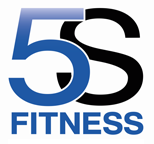 Been working the Glutes hard on some of the Personal Training sessions at the 5S Functional Fitness Facility – Macclesfield.
Been working the Glutes hard on some of the Personal Training sessions at the 5S Functional Fitness Facility – Macclesfield.
The “Glutes” are made up of 3 muscles – Gluteus Maximus (Largest & Most Superficial), Gluteus Medius & Gluteus Minimus (Smallest & Deepest).
The Gluteus Maximus is one of the strongest muscles in the human body and some of its major roles include Erecting the Spine (Going from a bent over/hinged position to being stood up straight) and Extending the Hips (Being at the bottom of a squat to being stood up) – Making the Gluteus Maximus one of the most important muscles used in daily function and training.
The Gluteus Medius & Minimus work together to bring the thigh away from the midline “Abduction”. They also play an essential role (Along with the Tensor Fasciae Latae) in stabilizing the body on one leg, such as when we walk or run – Its obvious to see how these two small muscles are extremely important when it comes to Performance & Injury Prevention. (If the Smaller Glute muscles “aren’t pulling their weight” the Tensor Fasciae Latae can become overactive which can then cause a knock on effect on the Iliotibial Band (ITB) often resulting in knee problems)
The issue of the Glutes not working as well as they should is quite common and often when a muscle “isn’t pulling its weight” other muscles have to start working to help out. This can cause all sorts of problems (Just like the example above) and that’s why its not only essential for these muscles to be working correctly for performance reasons but also to ensure we don’t develop injuries.
Often we need to work on specific Glute exercises (Such as Glute Bridges, Barbell Hip Thrusts & Clam Shells) to isolate the Glutes and make sure they are activated/engaged… Big Compound movements (Such as Squats) wont always get the Glutes working like they should, other muscles (Such as Hamstrings) might just keep picking up the slack.
